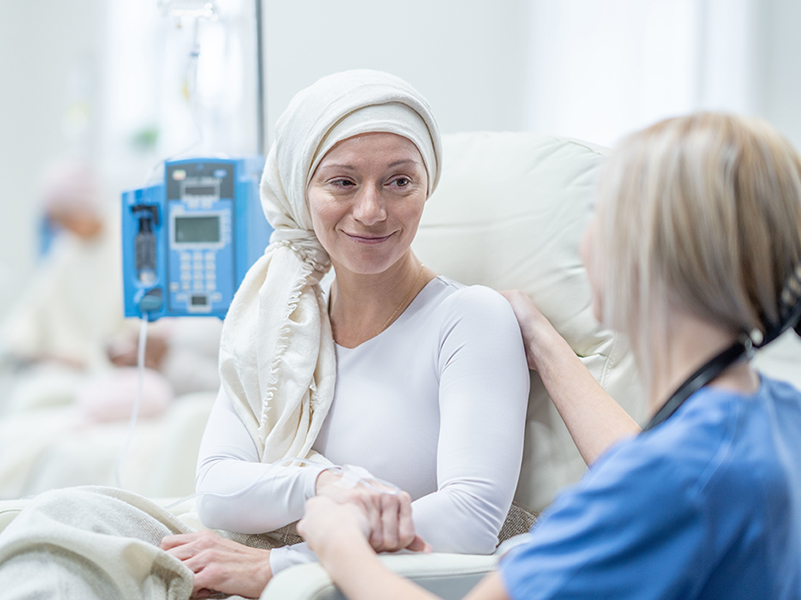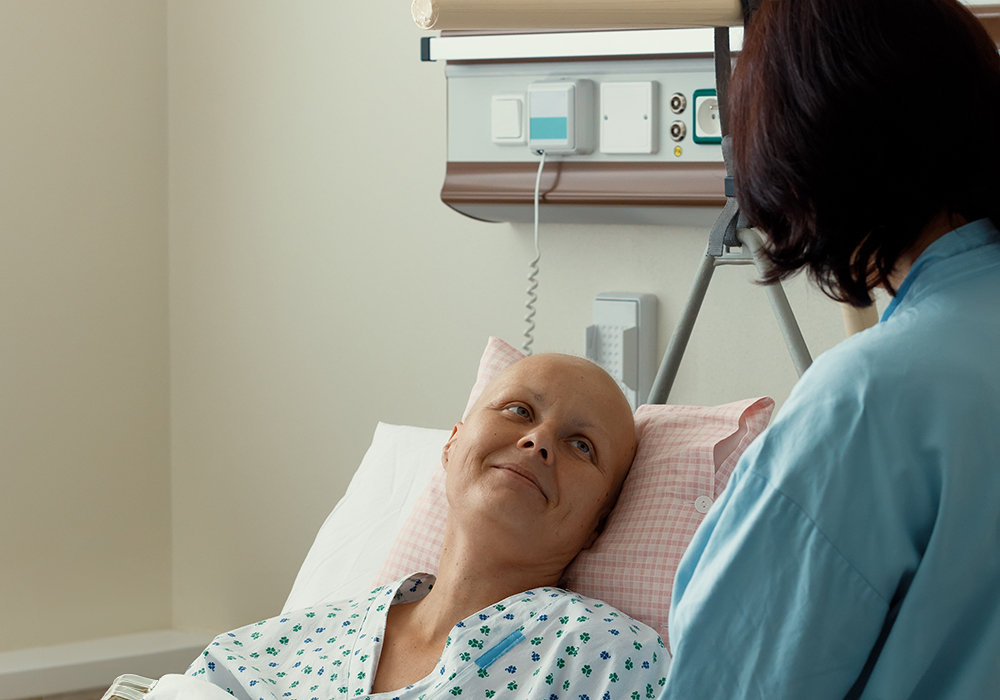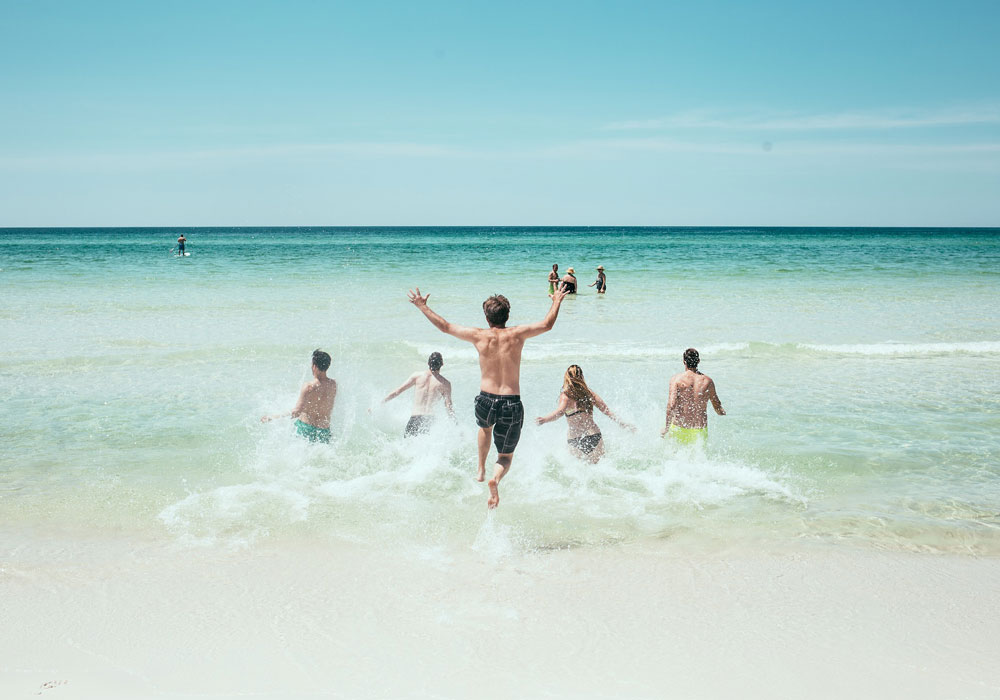With summer in full swing, it’s the perfect time to head outdoors and enjoy the sunny weather. But are you protecting yourself from potential risks? The U.S. Department of Health and Human Services has named July as Ultraviolet (UV) Safety Month. The goal is to spread the word about how important it is to protect everyone’s skin from the harmful effects of UV rays. This presents a teaching opportunity for oncology nurses and their patients—not just during July but all year long.
What Is UV Radiation?
Most individuals don’t realize that UV light is a form of radiation. By definition, radiation is the emission of energy from any source. Radiation has many different types, but UV radiation is a form of electromagnetic radiation. The main source of UV radiation is the sun, although it can come from man-made sources such as tanning beds and welding torches. Radiation exists across a spectrum from very high energy, such as x-rays and gamma rays, to very low energy, such as radio waves. UV rays have more energy than visible light, but not as much energy as x-rays.
The sun emits radiation in the form of UV light, which is classified into three types by wavelength: UVA, UVB, and UVC. The ozone layer is a protective layer in Earth’s stratosphere that blocks all UVC light, but UVB and UVA light pass through it. UVA penetrates deeply into the skin. It’s the type of UV radiation that causes wrinkling or leathering of the skin. UVB is the type of radiation that causes sunburns. Exposure to both UVA and UVB are associated with the development of skin cancer, so it is important to protect the skin during exposure to sunlight.
UV radiation is at its highest when and where the sun’s rays are the strongest. This means that UV levels will be highest around noon on a clear sunny day, even more so during the summer months. UV levels will also be highest near surfaces that reflect sunlight, such as snow or sand, and it’s more pervasive at higher altitudes.
How Does UV Radiation Affect Skin Cancer?
One the most dangerous sources of UV radiation is artificial UV lights like the type found in indoor tanning beds. The amount and type of UV radiation depends on the specific lamps used in the bed, how long a person stays in the bed, and how many times the person uses it. Most modern UV tanning beds emit mostly UVA rays, with the rest being UVB. The American Academy of Dermatology reports that indoor tanning may be responsible for an estimated 400,000 cases of skin cancer in the United States annually.
According to the American Cancer Society, an estimated 5.4 million basal skin cancers are diagnosed annually, and nearly 3.3 million people are diagnosed with squamous cell skin cancers annually. Even more troublesome is that many people are diagnosed with more than one skin cancer type. Invasive melanoma represents about 1% of all skin cancer cases, but it accounts for the majority of skin cancer deaths with an estimated 87,110 new cases of invasive melanoma annually and 9,730 deaths annually. Overexposure to UV radiation can also cause eye cataracts, eye damage, skin aging, growths on the skin, and immune system suppression.
How to Protect the Skin From UV Radiation
Fortunately, there are measures to minimize the risks that comes with sun exposure.
- Block UV light with protective clothing. This includes wearing a hat (preferably wide brimmed) as well as shade-protective clothing. This can partly shield the skin from the harmful effects of UV ray exposure. The American Academy of Ophthalmology notes that many forget to wear sunglasses that have a label that says protects 99% of UV radiation for eye protection.
- Stay in the shade, especially when UV radiation is most intense at midday between the hours of 10 am and 4 pm. The sun can still damage the skin on cloudy days or in the winter, so year-round protection is important. Use caution when near reflective surfaces, like water, snow, and sand, which can reflect the damaging rays of the sun. This can increase the chance of sunburn, even in areas that appear to be shaded. Individuals can experience more UV exposure at higher altitudes that have less atmosphere to absorb UV radiation.
- Choose the right sunscreen and apply it correctly. The U.S. Food and Drug Administration's regulations for sunscreen labeling recommend that the sunscreen have a sun protection factor (SPF) of at least 15, and it should protect against both UVA and UVB radiation. According to the National Council on Skin Cancer Prevention, most people apply only 25%–50% of the recommended amount of sunscreen. When out in the sun, apply at least one ounce (a palmful) of sunscreen every two hours. It should be applied more often when sweating or swimming, even if the sunscreen is waterproof.
- Stay away from sources of artificial UV light. There is no such thing as a safe tan. The Centers for Disease Control and Prevention stress that indoor tanning significantly increases the risk of developing melanoma, basal, and squamous cell cancers. It also causes premature aging of the skin and suppresses the immune system.
When planning outdoor activities, information about how much sun protection is needed is available at the Environmental Protection Agency's UV index. The index measures the daily intensity of UV rays from the sun on a scale of 1–11. A low UV index requires minimal protection, whereas a high UV index requires maximum protection.
Many are scared by the term radiation. Many realize that radiation is dangerous, and it increases the risk for developing cancer. If individuals associate sunlight as a form of radiation, they may be inclined to make a bigger effort to avoid exposure and reduce the risk for developing malignancy.






